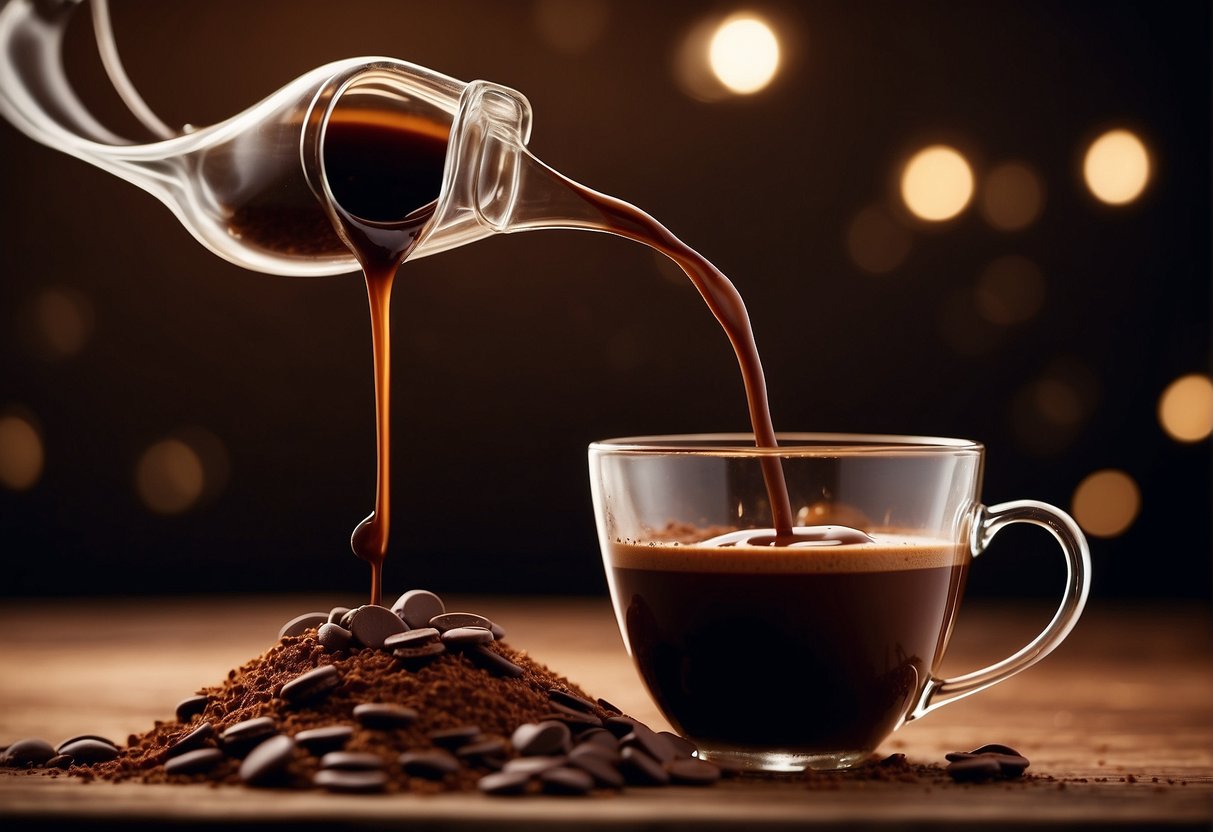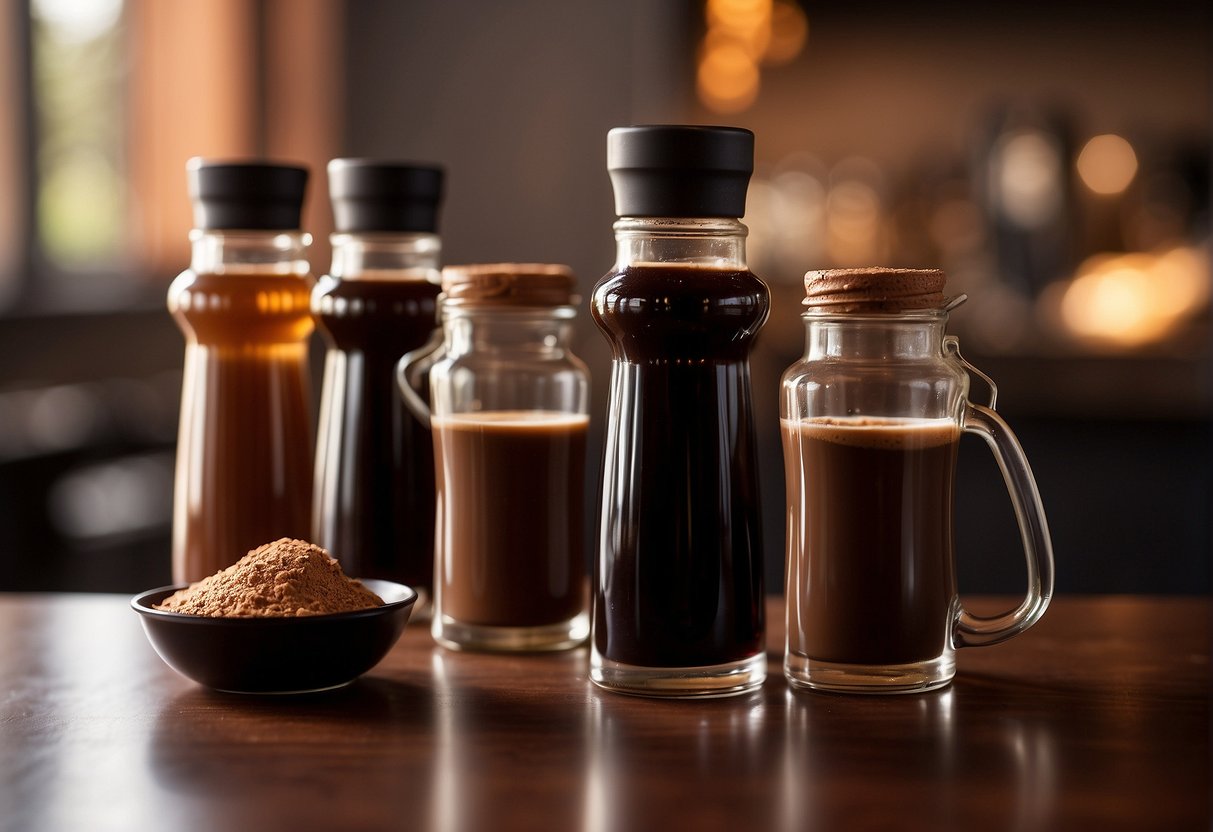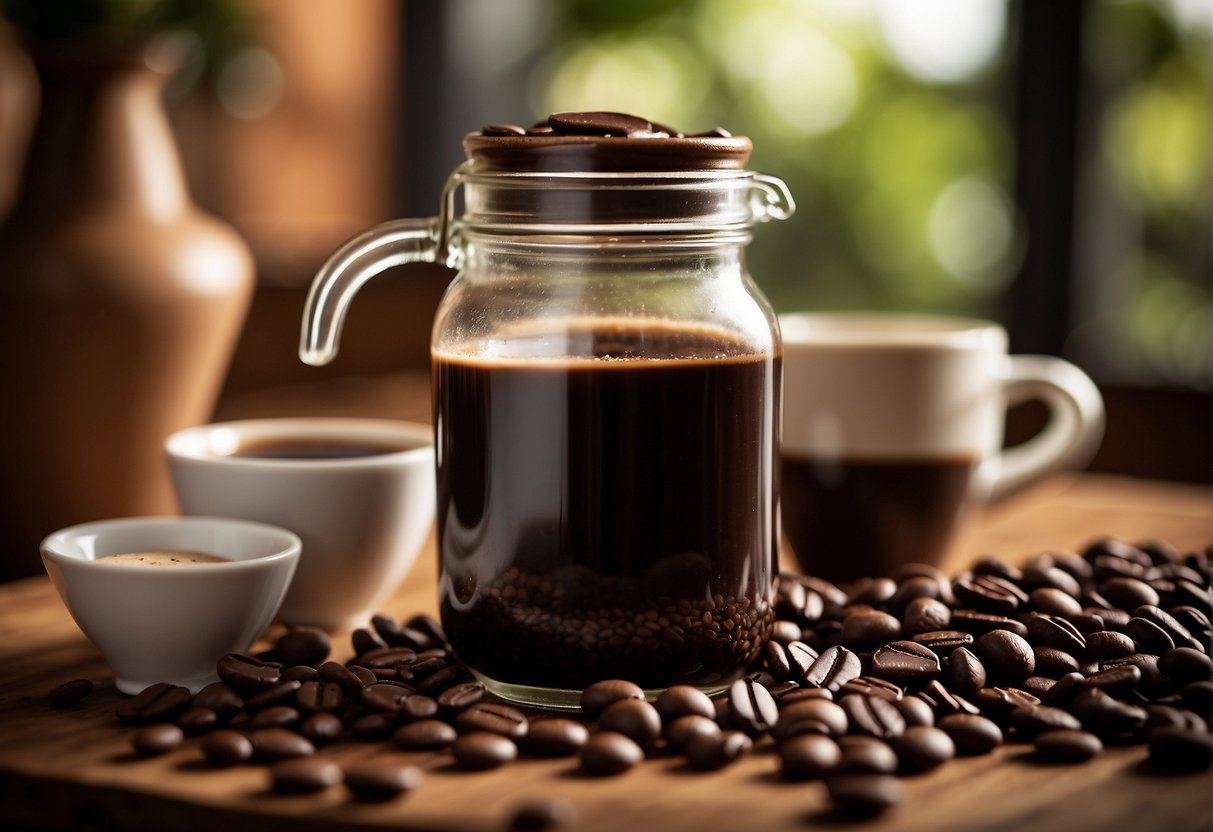Mocha, a delightful fusion of chocolate and coffee, has stood the test of time as a cherished coffee drink around the world. The secret to crafting a superb mocha lies in its chocolate component—the chocolate syrup. The choice of syrup not only enhances the flavor complexity but also contributes to the drink’s creamy texture. As such, selecting the best chocolate syrup is a pivotal step for both amateur baristas and seasoned coffee enthusiasts keen on recreating that rich, café-quality mocha at home.

Different chocolate syrups offer a variety of flavor profiles, from intensely dark and bitter to sweet and mild. High-quality chocolate syrup should possess a deep chocolate flavor capable of complementing the robust taste of coffee without being overshadowed. It is also important for the syrup to integrate seamlessly into the coffee, ensuring a smooth and uniform sip. Some chocolate syrups are designed for optimal dissolution in beverages, making them an ideal choice for those who prefer a well-mixed mocha.
For those looking to replicate their favorite coffeehouse mocha, it is worthwhile to explore the market for gourmet chocolate syrups known for their luxury and taste, like Ghirardelli chocolate powder, which is praised for its ease of blending and sumptuous flavor. On the other hand, homemade chocolate syrup options allow for personalization and the elimination of artificial ingredients, suiting those with a preference for natural sweetness in their mocha. Whether the aim is to indulge in a premium brand or to craft an artisanal concoction, the selection of chocolate syrup can elevate the mocha experience by adding that special touch of chocolatey excellence.
Understanding Chocolate Syrup Varieties

In the world of mocha, the choice of chocolate syrup is crucial as it defines the flavor and quality of the drink. The market offers a range of syrups from cocoa-based options to sugar-free alternatives, and specialty brands that prioritize high-quality ingredients.
Cocoa-Based Syrups
Cocoa-based chocolate syrups are typically made with either cocoa powder or unsweetened cocoa powder, providing a rich, authentic chocolate flavor. These syrups may boast being non-GMO and kosher, catering to a wide variety of dietary needs. They tend to have a deep, bittersweet taste ideal for balancing the robustness of espresso in a classic mocha.
Sugar-Free Options
For those monitoring their sugar intake, sugar-free chocolate syrups offer a guilt-free way to enjoy a mocha. These products often utilize alternative sweeteners to achieve a similar sweetness level without the caloric content of sugar. They can be a great fit for diabetics or anyone looking to reduce their sugar consumption while still indulging in a chocolaty beverage.
Specialty Brands
Specialty brands oftentimes commit to using the highest quality ingredients, including real chocolate. These syrups may cater to gourmet preferences, sometimes incorporating unique flavors or single-origin chocolates. They pride themselves on not only providing a distinct taste but also on their ethical sourcing, with many being certified as organic or fair trade.
Incorporating Syrup into Mocha Drinks
https://www.youtube.com/watch?v=szl3LgeE2-g&embed=true
Integrating syrup into mocha beverages successfully enhances the depth and complexity of flavor. Syrups offer a vast spectrum of sweetness and chocolate richness that can transform a standard coffee drink into a luxurious treat.
Creating the Perfect Mocha
To craft the perfect mocha, one begins with a quality espresso as the foundation. Typically, one to two shots of espresso are used, depending on the desired strength. The espresso is then blended with steamed milk or cream, creating a smooth texture and rich taste. The key ingredient that defines a mocha is the chocolate syrup; selecting a high-quality syrup, such as Ghirardelli Majestic Premium Cocoa Powder, which is known for its smooth texture and deep flavor, is crucial. The syrup should be poured over the espresso, followed by the addition of the steamed milk or cream, ensuring a thorough mixture for even distribution of flavors.
For a twist on the classic, an iced mocha can be made using cold brew or chilled espresso, cold milk, and chocolate syrup, served over ice. Contrastingly, a white chocolate mocha utilizes white chocolate syrup, offering a sweeter and creamier version of the traditional mocha. Toppings such as whipped cream can add an extra element of indulgence.
Variations of Mocha
Mocha variations cater to a wide range of preferences. An iced white chocolate mocha incorporates the velvety notes of white chocolate syrup with the cooling sensation of iced coffee. Meanwhile, seasonal favorites, like a peppermint mocha, blend mocha syrup with peppermint extract, and a caramel mocha involves adding caramel syrup into the mix for a buttery finish.
For those looking to avoid caffeine, a decaf coffee base can be used, which retains the flavor profile while eliminating the caffeine. On the other hand, for a stronger, more caffeinated drink, additional espresso shots may be included. A homemade mocha can be easily prepared using an espresso machine at home, combining homemade mocha sauce with the steamed milk of one’s choice. Exploring the nuances between a bold, traditional mocha and its many variations ensures a delightful experience for all coffee enthusiasts.
Health and Dietary Considerations

When choosing the best chocolate syrup for mocha, it is important to consider the health and dietary impacts. This includes understanding the caloric and sugar content, availability of dairy-free and vegan alternatives, and awareness of potential allergens.
Caloric and Sugar Content
Chocolate syrup can significantly add to the calorie and sugar intake of your beverage. Traditional syrups often contain high levels of sugar, contributing to the overall sweetness and flavor profile of a mocha. For instance, some syrups may add upwards of 20 grams of sugar per serving, which should be taken into account for those monitoring their sugar consumption.
Dairy-Free and Vegan Alternatives
For individuals who avoid dairy, dairy-free and vegan chocolate syrups are available. These products often use ingredients like oat milk or almond milk in place of milk or cream. Additionally, they can be used to create a delicious vegan mocha without compromising on taste or texture.
Allergen Information
Understanding allergen information is critical for those with specific dietary restrictions. Chocolate syrups may contain allergens such as milk or soy. It’s essential to check if the syrup is gluten-free or certified kosher if these are dietary requirements. Furthermore, opting for products free from these allergens can make enjoying a mocha possible for those with sensitivities or allergies.
Culinary Uses Beyond Beverages
While chocolate syrup is traditionally used in mochas and other drinks, its rich flavor also enhances various culinary creations. From sweet confections to innovative savory dishes, the versatility of chocolate syrup allows for expansive culinary exploration.
Desserts and Toppings
Chocolate syrup provides a delightful finish to an array of desserts. Chefs incorporate it into milkshakes for a decadent chocolatey twist, appealing to chocolate lovers of all ages. It’s often drizzled over ice cream or used as a dip for fruit, complementing the natural flavors with its sweet profile. For a textured experience, chocolate shavings are sometimes sprinkled on top of syrup-laden desserts, providing both aesthetic appeal and a satisfying crunch.
- Ice Cream: A classic drizzle of chocolate syrup or a more elaborate sundae with additional toppings.
- Fruit: A light syrup coating brings out the brightness of the fruit, particularly strawberries and bananas.
- Cakes and Brownies: A syrup swirl adds moisture and richness to these baked goods.
Savory Cooking Applications
Incorporating chocolate syrup into savory cooking may be less conventional, but it’s a practice that can yield surprisingly delightful results. The syrup can be added to marinades or glazes to introduce a subtle sweetness and depth, enhancing meats like pork or beef. It also contains antioxidants, adding a nutritional boost to savory dishes. Chefs may use it sparingly to avoid overpowering the primary flavors.
- Marinades: A small amount complements the umami flavors in meats.
- Glazes: Applied to meats for a glossy, flavorful coating.
- Dressings: Used with a careful hand, it can add a unique twist to vinaigrettes or cream-based dressings.
Beyond its use in mochas and sodas, chocolate syrup’s culinary applications demonstrate its adaptability in both sweet and savory contexts, making it a valuable ingredient for innovative cooking.
Purchasing and Storage Tips
When selecting chocolate syrup for your mocha, it’s important to consider not only the quality and flavor but also where to purchase and how to store it. Proper storage is key for maintaining the decadence and rich flavor that premium syrups like Godiva Chocolate Syrup offer.
Where to Buy
Chocolate syrup for mocha can be secured from a variety of stores throughout the USA. Specialty coffee shops often carry high-end brands such as Godiva and Monin, both known for their luxurious taste perfect for decadent drinks like hot chocolate and mochas. For convenience, consider visiting larger supermarkets or retailers, which typically house an extensive range of options, including syrups with detailed nutrition information. One can also find a broad selection online, where reviews and product descriptions aid in making an informed choice.
- Specialty Coffee Shops: High-end brands like Monin and Godiva.
- Supermarkets: Broader range, including options with nutrition information.
- Online Retailers: A vast selection with the convenience of reviews.
Preservation for Freshness
Once purchased, the key to maintaining the syrup’s freshness lies in proper storage. Chocolate syrup should ideally be kept in a cool, dry environment. Transferring syrup into a mason jar or a bottle with a tightly sealed lid can prolong its shelf life. It’s advisable to avoid storage near sources of heat or light, which can compromise the quality. For those who indulge in hot drinks frequently, keeping chocolate syrup at room temperature is acceptable, provided it’s used within a reasonable timeframe. If the syrup contains dairy or has been mixed to create a simple syrup with vanilla extract for a specific drink like a macchiato, storing it in the refrigerator is necessary.
- Cool, Dry Environment: Protects against heat and light.
- Tightly Sealed Container: A mason jar or bottle can extend shelf life.
- Refrigeration: Required for dairy-based or mixed syrups.
